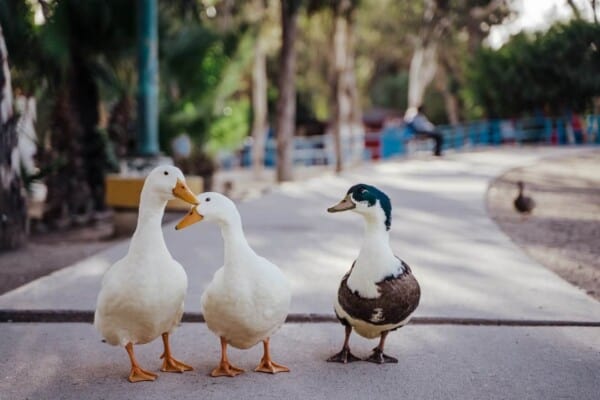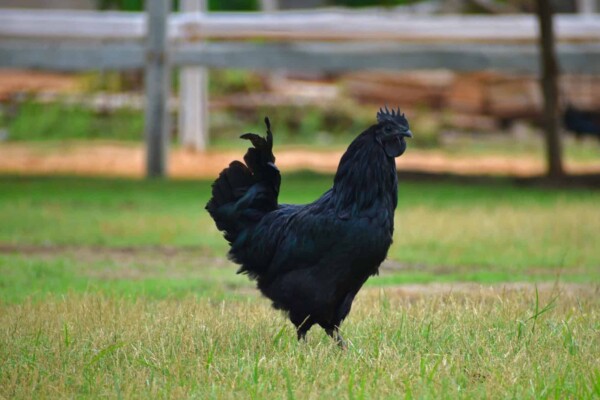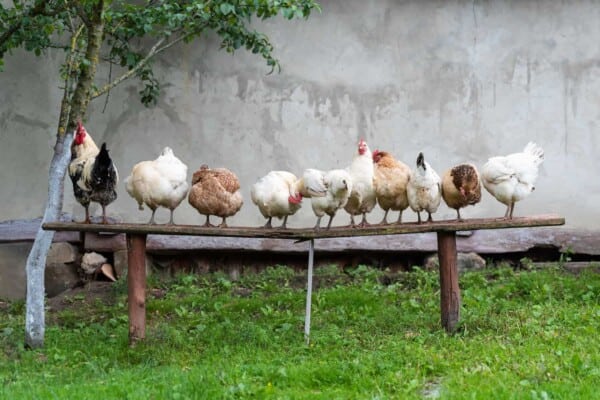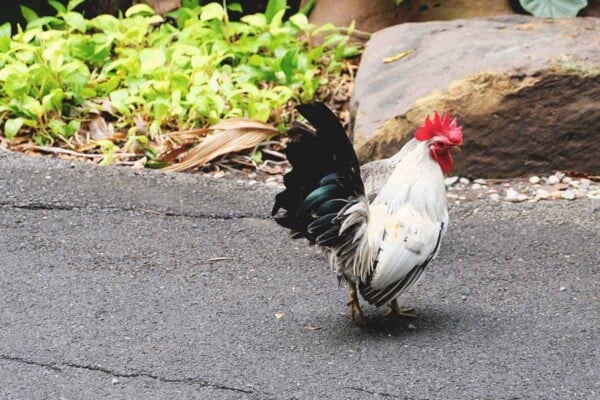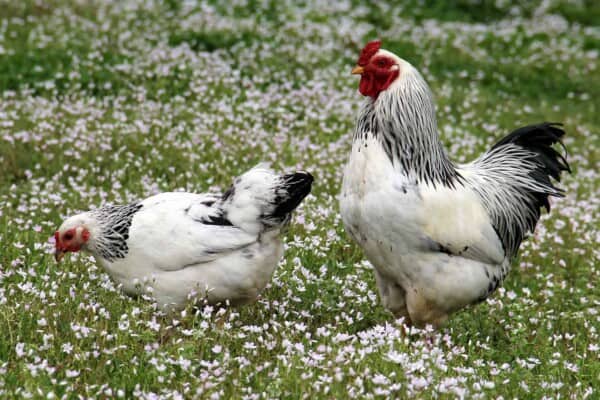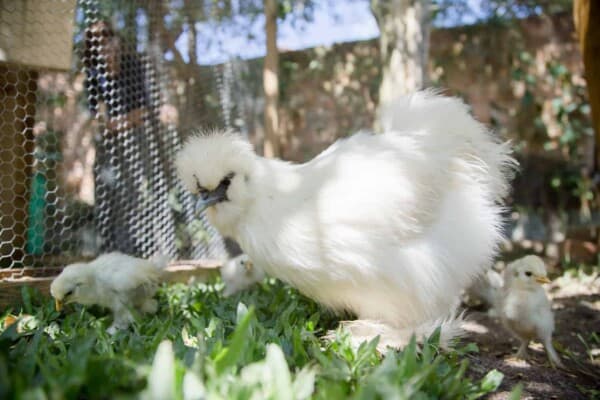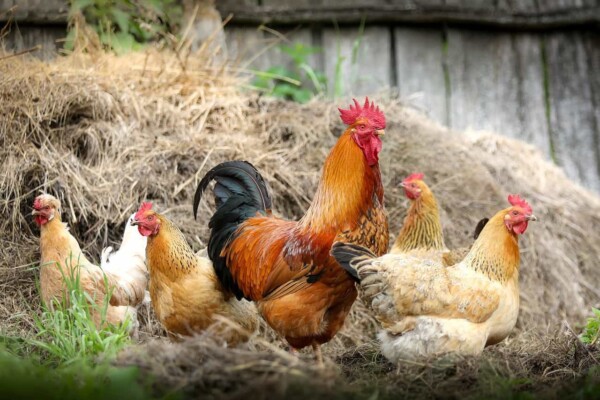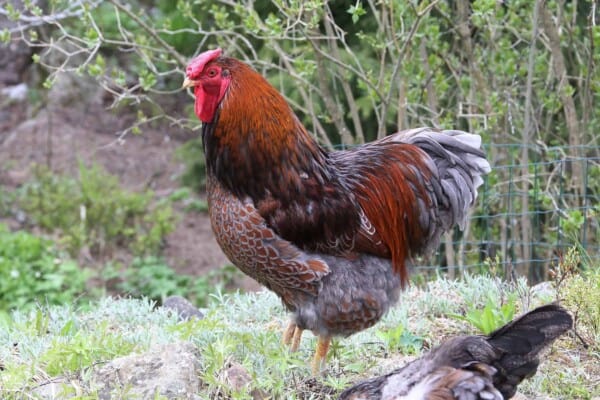Chickens are by far the most versatile creatures we’ve ever gotten our hands on. They are perfect for our every need, and while we did have a hand in their evolution over the decades, this doesn’t take away from the fact that they are the perfect companions we would want alongside our farm forever.
Our ancestors realized their utility a while back, which is why they worked together for the sake of breeding the perfect specimen.
This has led to the inception of a lot of different chicken varieties, which has made it quite hard for people to find the absolute best breed for them to raise.
And who can blame them, considering the fact that all of these efforts have led to the creation of so many stunning varieties.
Well today, we would like to bring you a comprehensive guide depicting one of our personal favorite chicken breeds around, the wondrous Barnevelder chicken.
So, if you want to know more about this breed and if you want to find out whether this is the right one for you or not, keep on reading because we’ve got all of the information right here, starting off with:
Barnevelder Chicken Origins

Interestingly enough, despite being a more recently developed chicken breed, we still don’t know exactly what led to the creation of it per se.
What we do know though is that Barneveld, east of Utrecht, is the homeplace of one of the most influential agricultural colleges that specializes in poultry, and the place where the breed originates from.
Because of how talented the graduates from this city are, it’s no wonder that the area became quite an affluential hub of the poultry industry.
Many people would go as far as to call this the main egg supplier to Europe, but let’s just say that they didn’t stop there, spreading their influence all across the globe in no time.
Later on down the line, they also noticed the heavy demand from England of brown shelled eggs, which is why they needed to create a bird that could lay these dark brown eggs in the first place.

It is believed that in order to create this new breed, the breeders needed to mix the landrace birds with the older local breeds that had been around since forever there.
As soon as the Oriental birds hit the scene though, the local poultry folks decided that it was about time to add their genes to the mix alongside several other imported fowl.
The official documents state that Langshans, Malays and Brahmas were amongst the most influential genes that were mixed in together, but they weren’t the only ones.
By 1898, the Gold Laced Wyandottes were added too, but even so, there was too much variety in the Barnevelder lines to call for an official breed standard.
This is why the original breeders decided to make an effort in order to create the breed standard that they wanted for so long.
And so, the Barneveld Breeders Association was officially created, and through their extensive work, in 1923 the breed had finally been standardized into what we have today.
Barnevelder Chickens’ Appearance
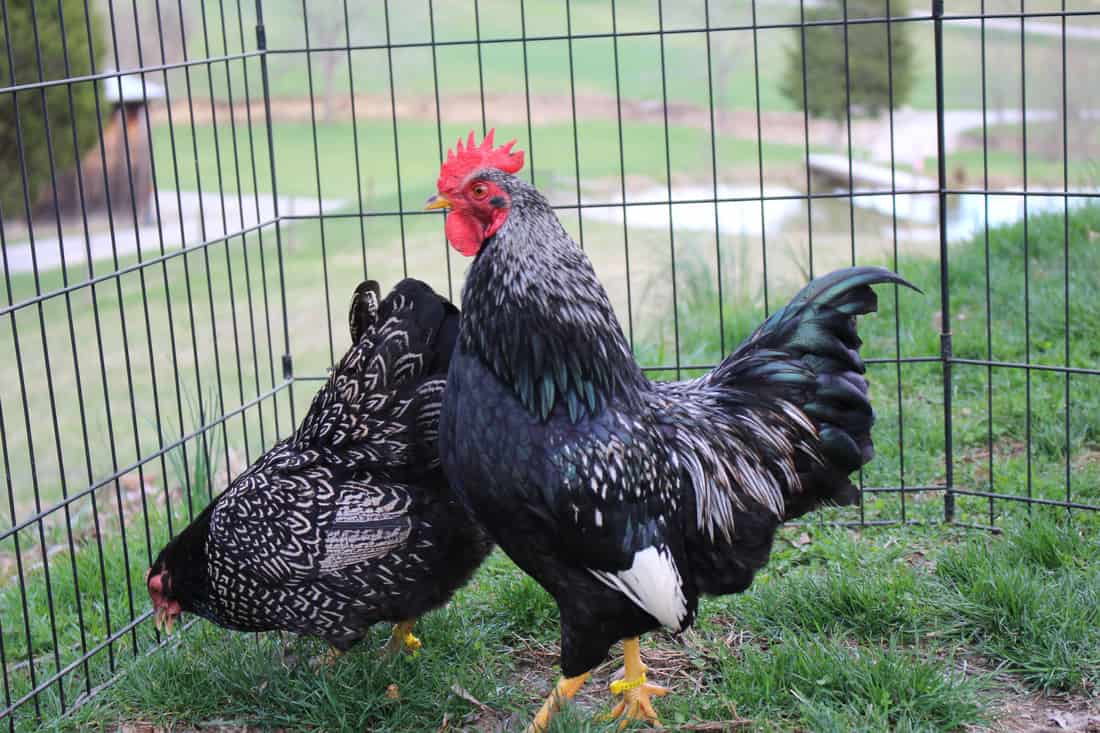
You can immediately tell if you’re dealing with a Barnevelder hen simply based on the pattern on its feathers. They are known for having a specific brown feather with double black lacing pattern, that not a lot of other chicken breeds can boast with.
Despite all of this though, their necks never have any patterns on them, instead they’re just pure black as you can tell right here.
Interestingly enough though, the Barnevelder roosters don’t have this pattern, instead they have a melanistic black-breasted red color.
Many breeders have tried over the years to produce double lacing pattern roosters, but their efforts were unsuccessful so far.
Even so, the Barnevelder’s body can be described quite easily as being rectangular and compact, with a U-shaped back. While the bird may be very mobile, when it comes to flying it sadly falls short due to its wings being very high up on the body.

We can also mention here that their neck is slightly arched, giving them a rather goofy look when you see them running around the coop.
Their tail is usually set around a 50-degree angle, and as you can probably tell right off the bat, they don’t lack feathers in the slightest there or anywhere on their body. In fact, experts like to describe their plumage most of the time with the word “tight”, which is a testament to their abundance.
When it comes to their comb, you can only really end up with a single variety with 5 different points, and the rest of their head, specifically their ear lobes, wattles and comb, are all blood red colored.
Usually, you’ll see that their eyes are red bay, and their beaks are horn colored. Their skin and legs are yellow and they have a total of four toes on each foot.
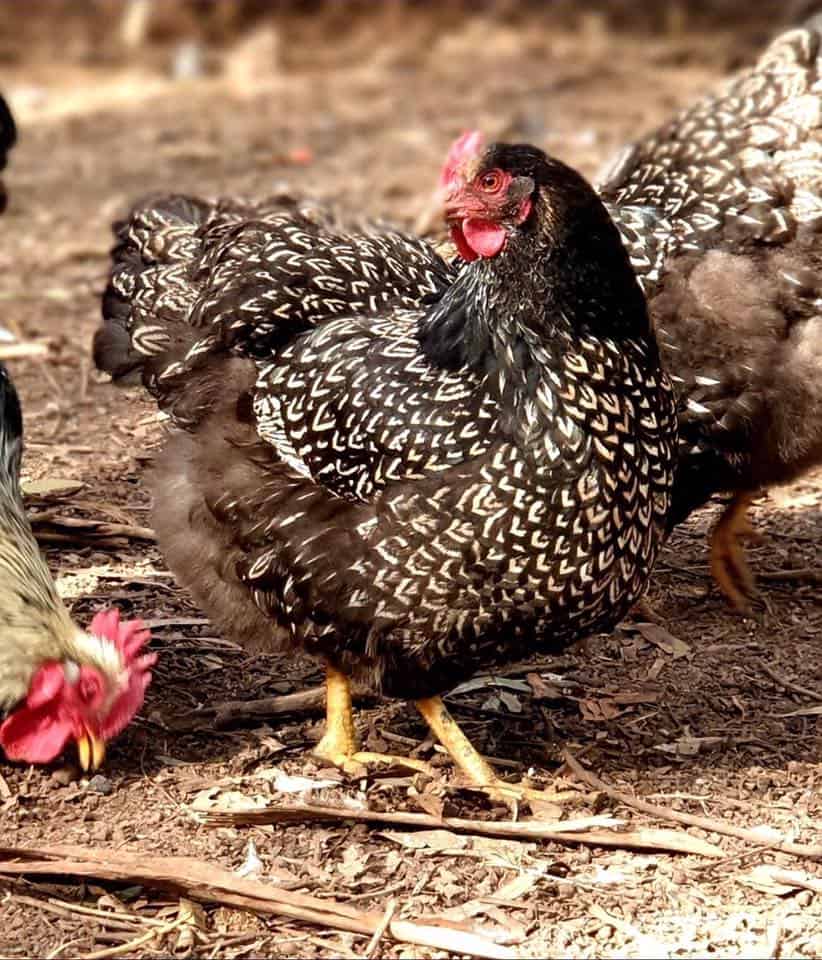
While it is nowhere near the largest chicken breed around, we will say that this is still a fairly massive one to boast with, since the hens can weigh as much as 5 to 6lbs in total while the roosters can get as heavy as 7 to 8lbs.
At the same time, the rooster can also have splashes of iridescent green, bronze and violet spread all across its plumage, and while for the most part this is what the standard Barnevelder looks like, you can also get your hands on a white and blue lacing variety too if you look hard enough.
Size wise, if you prefer to go for something more compact, you can always just go for a Bantam Barnevelder. They can get as heavy as 1.6 to 2lbs in total are they make for a good alternative if you don’t have the space to house regular sized Barnevelder.

These are all of the color varieties you can get your hands on right now:
- The Gold Variety (Double Laced)
- The Silver Variety (Double Laced)
- The Blue Variety (Double Laced)
- The Black Variety
- The White Variety
- The Chamois Variety
- The Blue Variety
- The Silver Variety
If you’re strictly looking for a show chicken or if you just want your chicken to look absolutely beautiful, you should definitely aim for one of the double laced varieties because they really do impress to say the least.
You can also technically get yourself an auto-sexing barred Barnevelder variety, although these are only really available in Europe, so you will either need to cross the sea or you will need to pay a lot more to get them into the US.
Behavior and Temperament
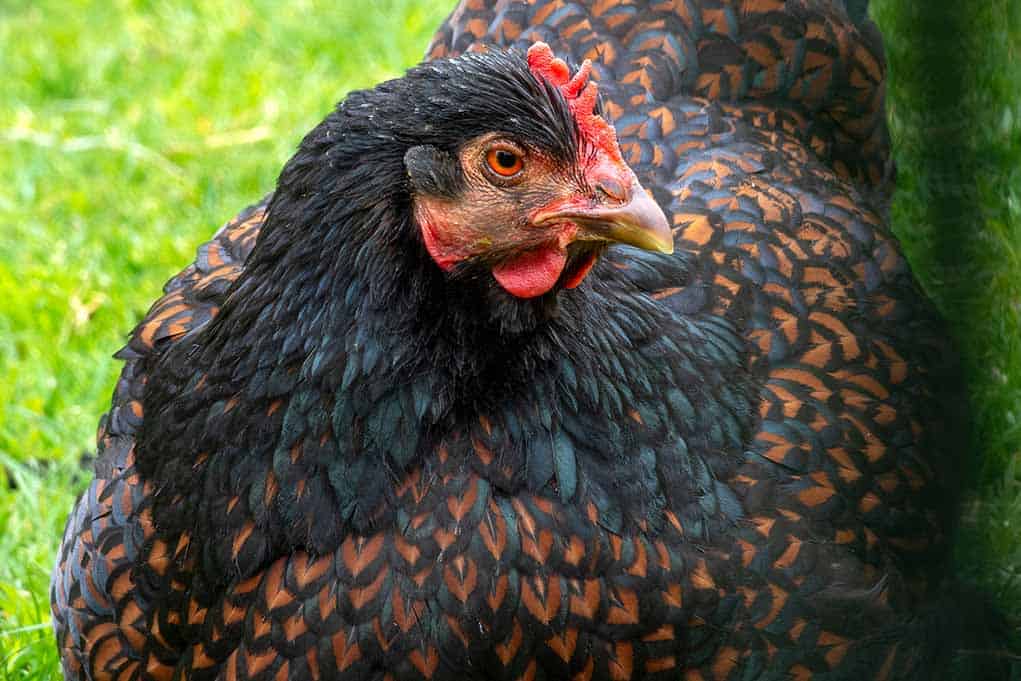
For the most part, you will not have any trouble with your Barnevelder chicken, since they tend to keep to themselves most of the time. They love to free range and they’ll forage for themselves with ease, without a care in the world.
As such, you won’t need to worry too much about their diet, as long as you give them plenty of free ranging space to roam around in.
But at the same time, we also recommend that you supplement their diet a little bit, if you want them to grow to their maximum potential.
They are very hardy chicken when it comes to cold environments, you’ll most likely see them roaming around the coop a lot even during the coldest of winters for example and you won’t have to worry about them getting sick anytime soon either.
In order to keep them safe you’ll need to use a three-foot fence or higher, but this all depends on your location and the potential predators around.
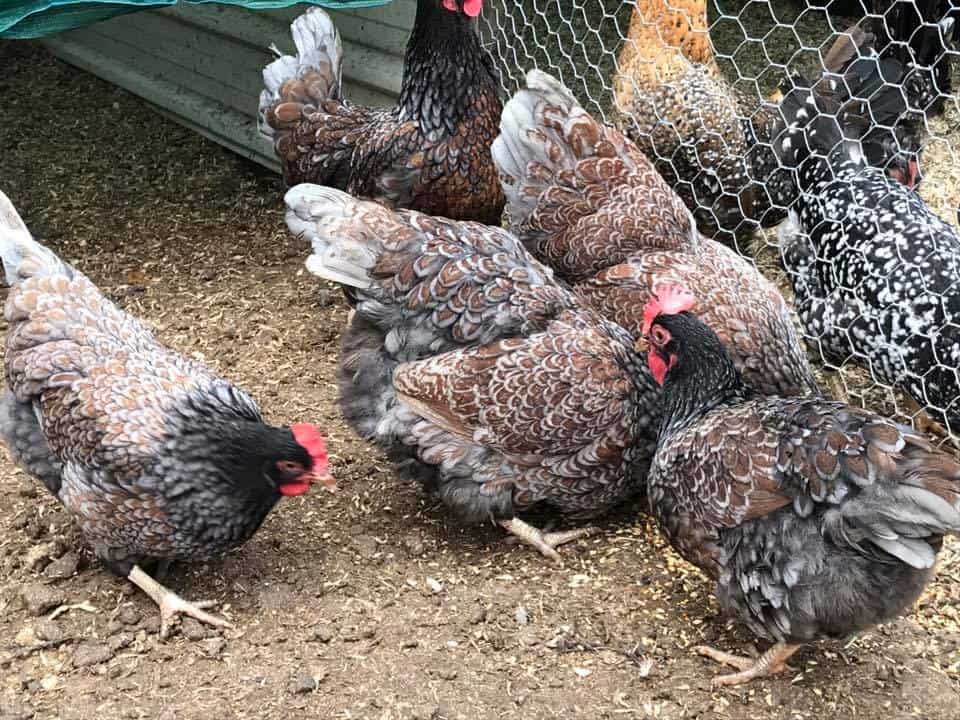
If you just want to make sure that your Barnevelder chicken don’t run off, a three-foot fence will be more than enough since they are very poor fliers so you won’t ever need to worry about that.
As far as their personality is concerned, they are very social and friendly with other chickens, to the point where you will rarely if ever hear about them starting any fights with any other breeds.
When it comes to the pecking order, they take the middle rows for the most part, so you don’t ever really need to worry about them trying their luck with any of the upper echelon chicken.
They are very friendly to humans and they can get attached quite easily to their humans if you bring in treats with you every time you see them.
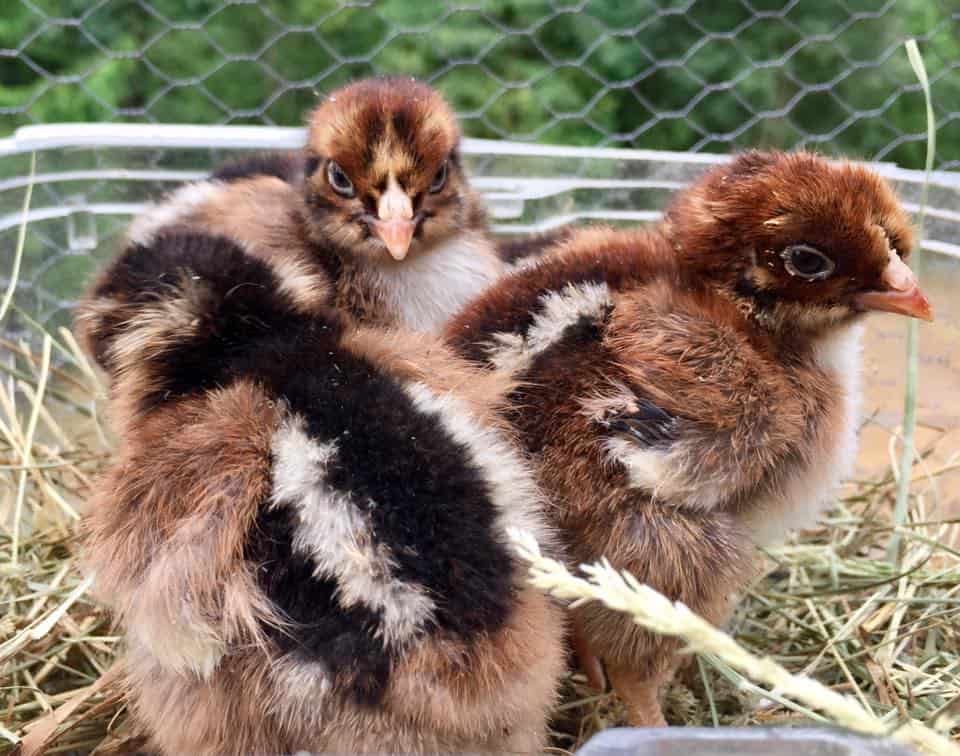
Just keep in mind that while they can seem goofy from a distance, Barnevelder chicks are quite intelligent creatures that will easily remember if you ever mistreat them.
They are also very curious creatures that will follow the person that has the food around all day long, if they believe that this will get them treats.
They are incredible diggers as well and when it comes to pest removal, we would argue that they are amongst the best around.
They are usually very calm and friendly, and while not all of them are going to be this docile, you can try to pet them and put them on your lap when they’re young and if you’re lucky, you could end up with a feathery pet that loves you with all of their heart in doing so.
Egg and Meat Production
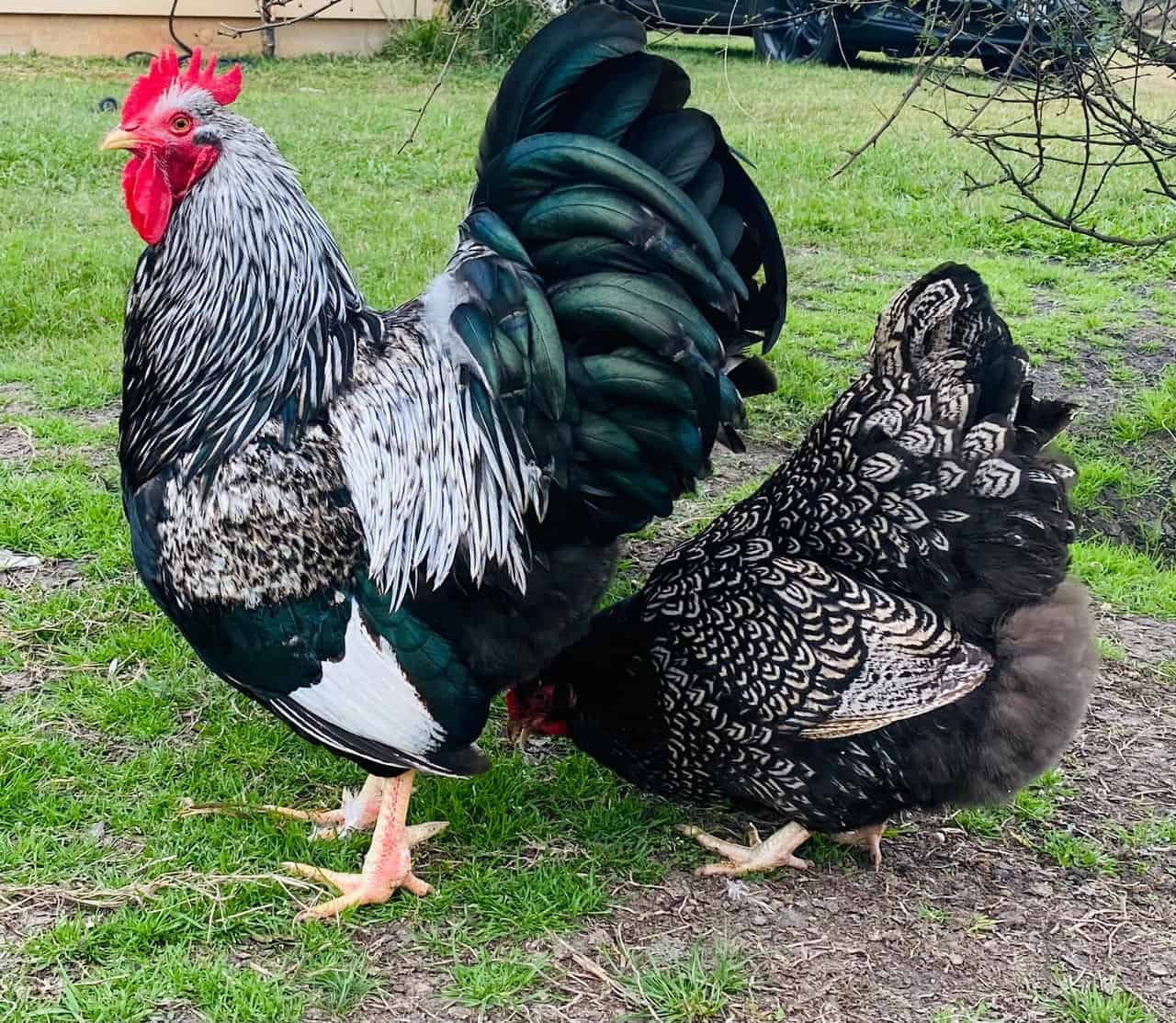
Per week, you can expect your Barnevelder to lay as many as 3 to 4 eggs. This means that every year you’ll get around 150-200 eggs per year from one.
If you managed to get your hands on a purebred variety, you will be happy to hear that should soon start laying dark brown, almost chocolate-colored eggs.
These eggs are fairly large, and every now and then they can also lay down specked large eggs that are always a treat to find.
On top of that, Barnevelder are special in that they can even lay eggs in the dead of the winter, making them the perfect companions to have when food prices rise and you still want to have what to put on the table.
You can also raise your Barnevelder chickens for their meat, but just keep in mind that they’re not the best when it comes to this.
While they are technically dual-purpose birds, most people use them for their eggs as they’re very proficient layers.
If you’re set on their meat though you can start slaughtering them at around 6 months or so. As far as we know though, they’re not the best table birds because they don’t produce all that much meat to begin with, and it is not all that delicious either.
You can always employ the services of a breeder that has specifically bred their Barnevelder chicken for these traits, but this will cost you a lot more, which won’t really be worth it at the end of the day, since you can find cheaper alternatives for meat everywhere.
Health Issues
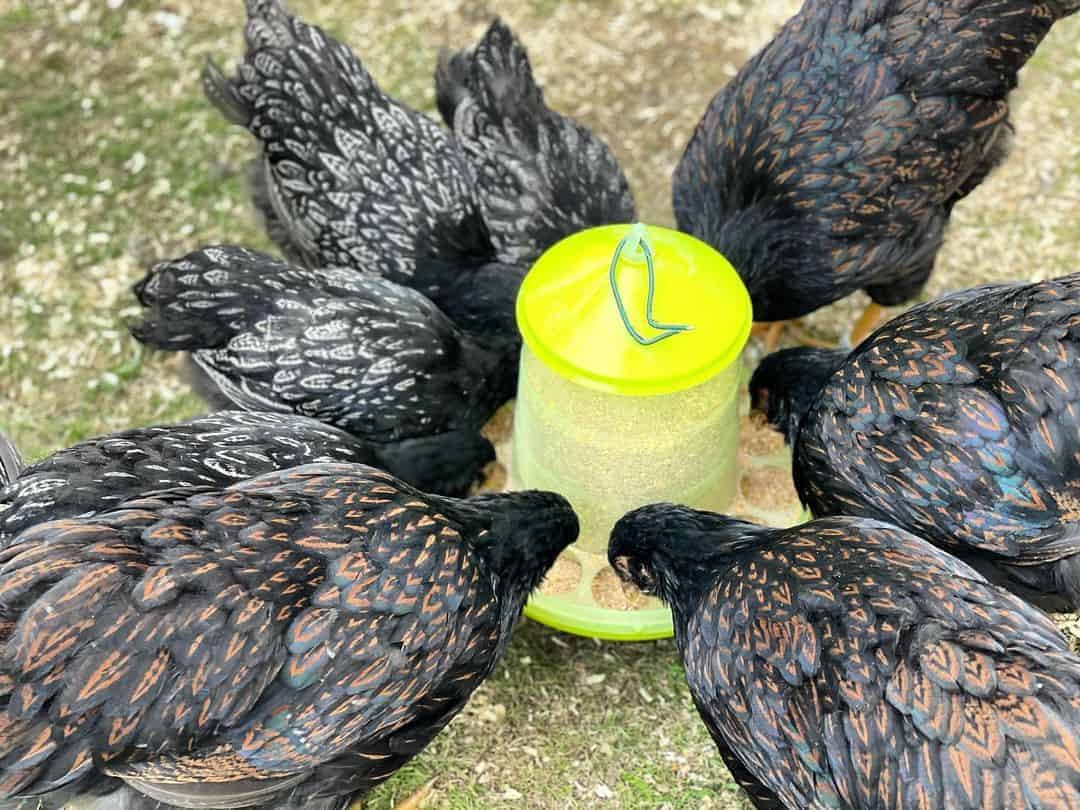
For the most part, the Barnevelder is a very hardy chicken breed, that you won’t have to worry about in the slightest.
That doesn’t mean that they’re exempt from the health issues that every other chicken breed has to deal with though. Parasites such as lice, mites and worms for example, will always make their way to the coop one way or another.
When they do though, it’s your responsibility to treat your chickens so they don’t cause distress or anemia around the coop.
Worms can also cause a lot of problems, so definitely have your chickens checked if they display any of the symptoms for worms.
The Donald Duck syndrome is also very prominent around chickens and the Marek’s disease is never out of the picture either.
We can’t stress this enough though but please always check your Barnevelder for the Donald Duck syndrome. This disease is fatal for most Barnevelder chickens, because it deforms their beaks to the point where they can’t feed themselves anymore.
You can clear out most problems though by simply requesting vaccinations from the hatchery you purchased the chickens from. Private breeders will also help you out in most cases too so definitely talk to them about it if you have the chance.
Is Barnevelder the Best Chicken Breed for You?
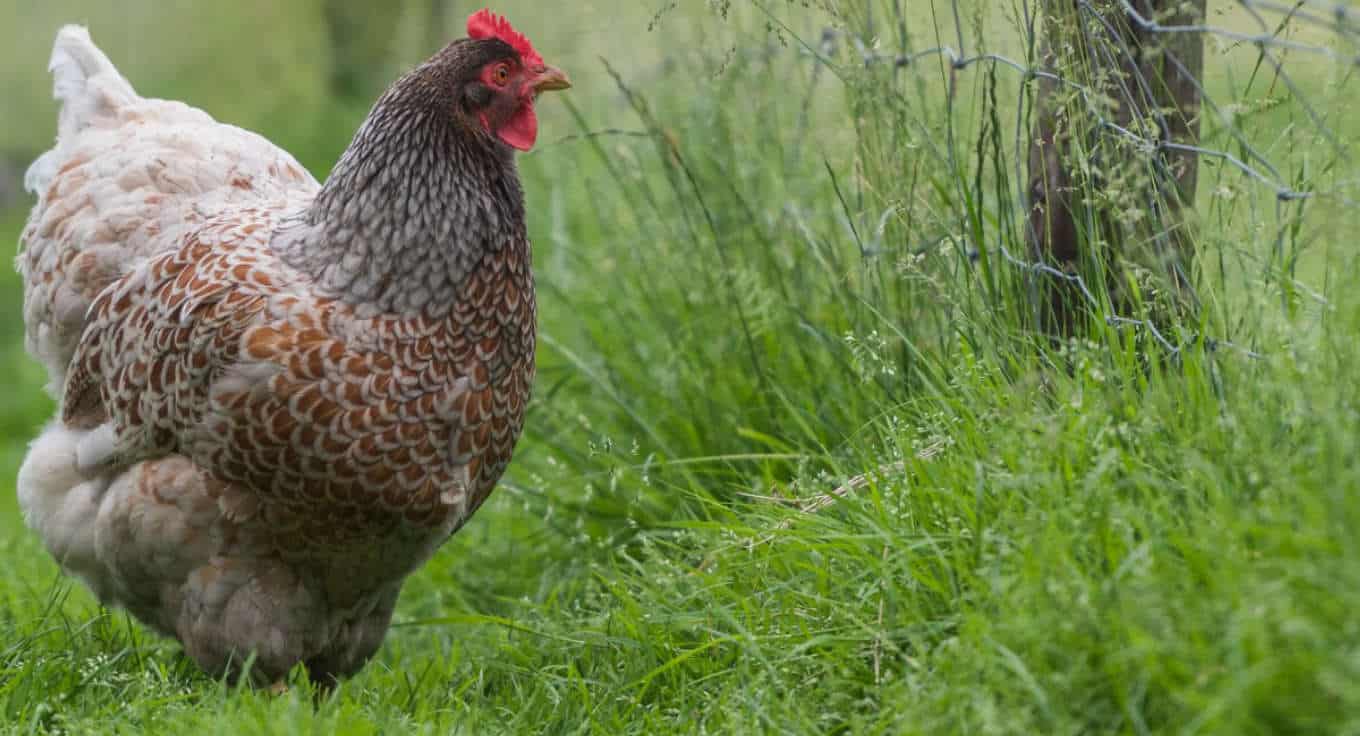
Just to make it clear, while the Barnevelder breed is not perfect by any means, it is still a very friendly and curious bird, and it does make for a very good family flock addition.
The breed generally dislikes confinement, but it can still be kept away from the flock for longer periods of time without an issue. On top of that, they’re very good at weeding and they tend to follow you around all day long when you walk into the coop.
They make for the perfect entertainment for kids though, especially if they are on the younger side themselves. On top of that they never start any trouble around the coop and they are very hardy creatures.
They’re generally very happy chicks that love to be petted, and let’s not forget about the fact that they are very tolerant to the cold, and they can even lay eggs during the harshest winters around.
Conclusion
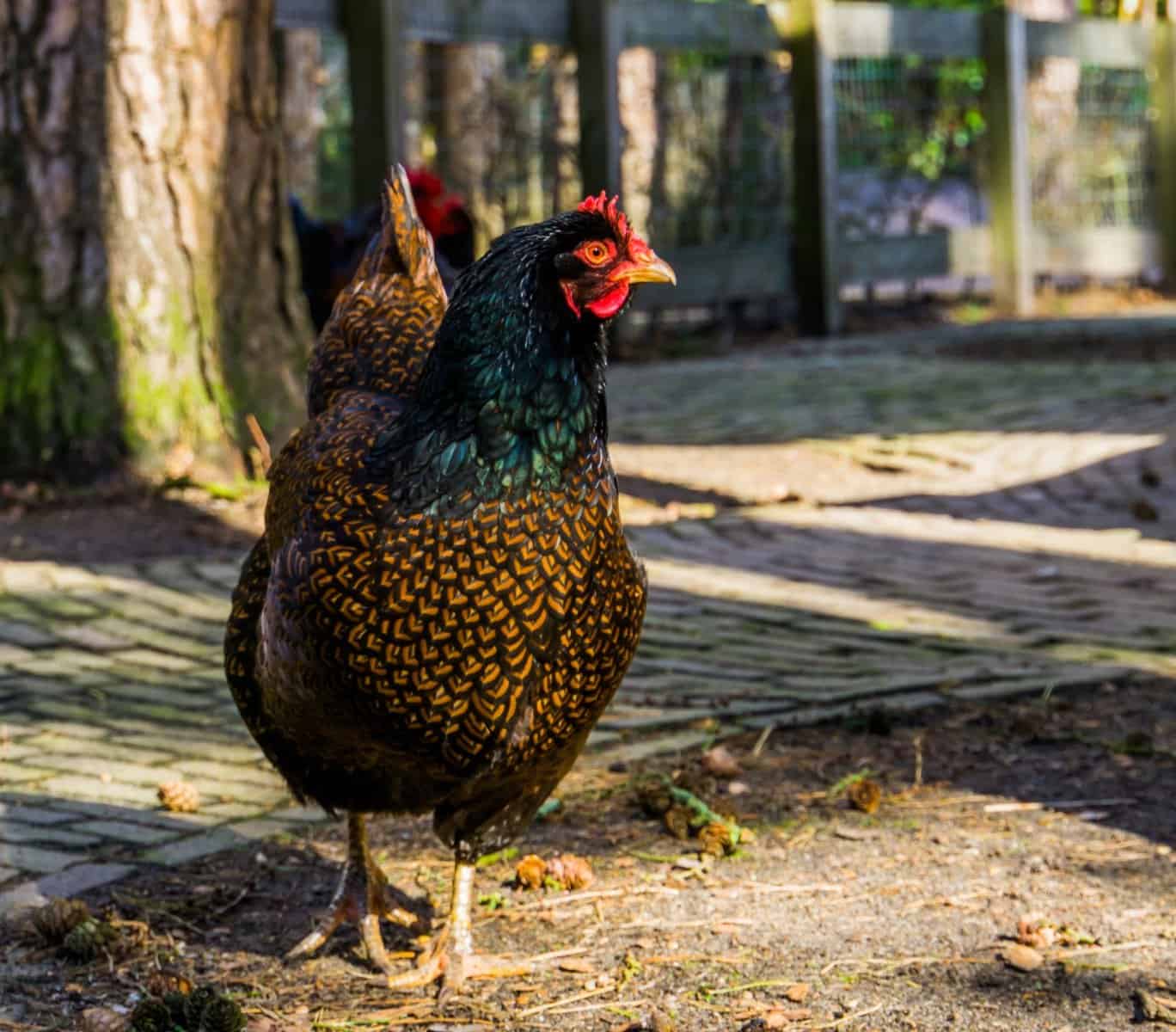
All in all, we would definitely recommend getting yourself a Barnevelder chicken if you like the way they look and more specifically, if you like the idea of having an extra feathery friend around then you can’t go wrong with the Barnevelder chicken.

